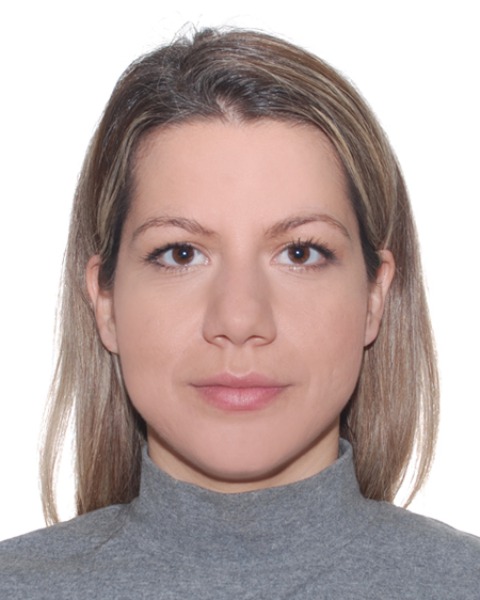Cellular and T cell engager Immunotherapy
Poster Session 1
P-020: Dendritic Cell/Myeloma Fusion Vaccine with Lenalidomide Maintenance following Autologous Hematopoietic Cell Transplant (HCT) results in long-term sustained T cell activation and clonotypic expansion
Wednesday, September 27, 2023
1:30 PM - 2:30 PM EEST

Dimitra Karagkouni, PhD
Research Fellow
Harvard Medical School, Department of Pathology, Beth Israel Deaconess Medical Center, Broad Institute of MIT and Harvard, United States
Introduction: We have developed a personalized cancer vaccine in which hybridomas are created between patient-derived multiple myeloma (MM) cells and autologous dendritic cells (DCs) such that a broad array of tumor antigens is presented in the context of DC-mediated co-stimulation. BMT CTN 1401 (NCT02728102) is a first-of-its-kind academically led national randomized trial for a personalized cell therapy. We assessed immunologic and clinical response following DC/MM vaccine combined with lenalidomide maintenance (Len) after autoHCT, as compared to maintenance alone. 203 patients were enrolled from 18 centers. To assess the impact of the DC/MM vaccine on the establishment of an anti-MM immune response, we profiled the peripheral blood (PB) immune landscape at the single-cell level pre-/post-vaccination.
Methods: We performed single-cell immunoprofiling (gene expression + V(D)J sequencing) on 160 PB mononuclear cell (PBMC) samples from 40 patients (DC/MM vaccine/Len/GM-CSF: N=20; Len/GM-CSF: N=10; Len: N=10) collected at enrollment, after 2, and following 3 vaccines (1-year post-transplant). Samples were processed using the 10x Genomics single cell 5' assay. Assessment of samples from the initial cohort (13 vaccinated patients) captured approximately half a million cells, corresponding to 47 cell populations.
Results: Vaccination with DC/MM fusions as compared to the maintenance therapy alone was associated with a durable expansion of MM reactive T cells at 1-year post-transplant. Preliminary analysis of the vaccine arm identified key immune subsets and provided a detailed characterization of the T-cell landscape (146,373 cells), including subsets of regulatory, effector, and memory compartments. A progressive rise in the relative abundance of CD4 and CD8 T cells was observed after 3 vaccinations compared to the pre-vaccination period. Immune cell repertoire profiling of full-length paired α/β T-cell receptors demonstrated a higher clonotypic expansion of the CD8 effector memory T cells (TCR clonotype frequency > 20) following 2 and 3 vaccinations as compared to pre-vaccination. CD8 T cells showed greater expansion than all other T-cell populations at each time point. Consistent with these findings, a higher proportion of shared epitope/paratope hotspots among the expanded TCR β clonotypes across the vaccinated patients was observed at 1-year post-transplant as compared to the early post-transplant period. The use of BEAM-T 10x Genomics technology is being employed to identify the antigenic targets of the expanded clonotypes. Transcriptomic analysis of the vaccine and control cohorts is being completed.
Conclusions: Assessment of PBMC samples from vaccinated patients provided a detailed picture of the immune landscape. The constant T cell expansion in patients following vaccination coupled with the shared paratope/epitope hotspots among patients, indicated the TCR cross-reactivity and suggested for the establishment of an anti-MM immune response.
Methods: We performed single-cell immunoprofiling (gene expression + V(D)J sequencing) on 160 PB mononuclear cell (PBMC) samples from 40 patients (DC/MM vaccine/Len/GM-CSF: N=20; Len/GM-CSF: N=10; Len: N=10) collected at enrollment, after 2, and following 3 vaccines (1-year post-transplant). Samples were processed using the 10x Genomics single cell 5' assay. Assessment of samples from the initial cohort (13 vaccinated patients) captured approximately half a million cells, corresponding to 47 cell populations.
Results: Vaccination with DC/MM fusions as compared to the maintenance therapy alone was associated with a durable expansion of MM reactive T cells at 1-year post-transplant. Preliminary analysis of the vaccine arm identified key immune subsets and provided a detailed characterization of the T-cell landscape (146,373 cells), including subsets of regulatory, effector, and memory compartments. A progressive rise in the relative abundance of CD4 and CD8 T cells was observed after 3 vaccinations compared to the pre-vaccination period. Immune cell repertoire profiling of full-length paired α/β T-cell receptors demonstrated a higher clonotypic expansion of the CD8 effector memory T cells (TCR clonotype frequency > 20) following 2 and 3 vaccinations as compared to pre-vaccination. CD8 T cells showed greater expansion than all other T-cell populations at each time point. Consistent with these findings, a higher proportion of shared epitope/paratope hotspots among the expanded TCR β clonotypes across the vaccinated patients was observed at 1-year post-transplant as compared to the early post-transplant period. The use of BEAM-T 10x Genomics technology is being employed to identify the antigenic targets of the expanded clonotypes. Transcriptomic analysis of the vaccine and control cohorts is being completed.
Conclusions: Assessment of PBMC samples from vaccinated patients provided a detailed picture of the immune landscape. The constant T cell expansion in patients following vaccination coupled with the shared paratope/epitope hotspots among patients, indicated the TCR cross-reactivity and suggested for the establishment of an anti-MM immune response.
